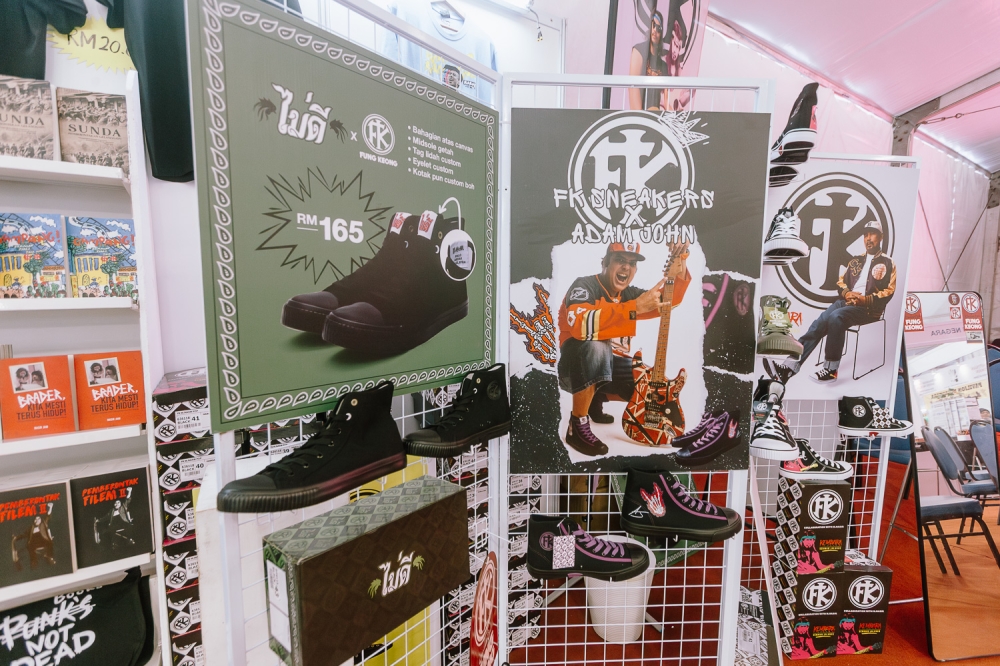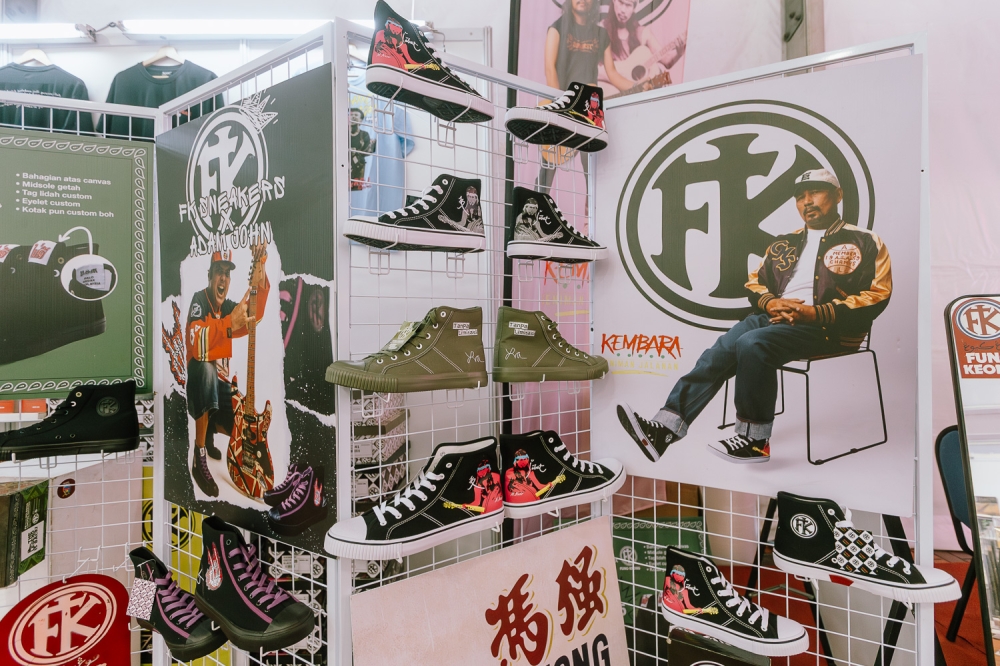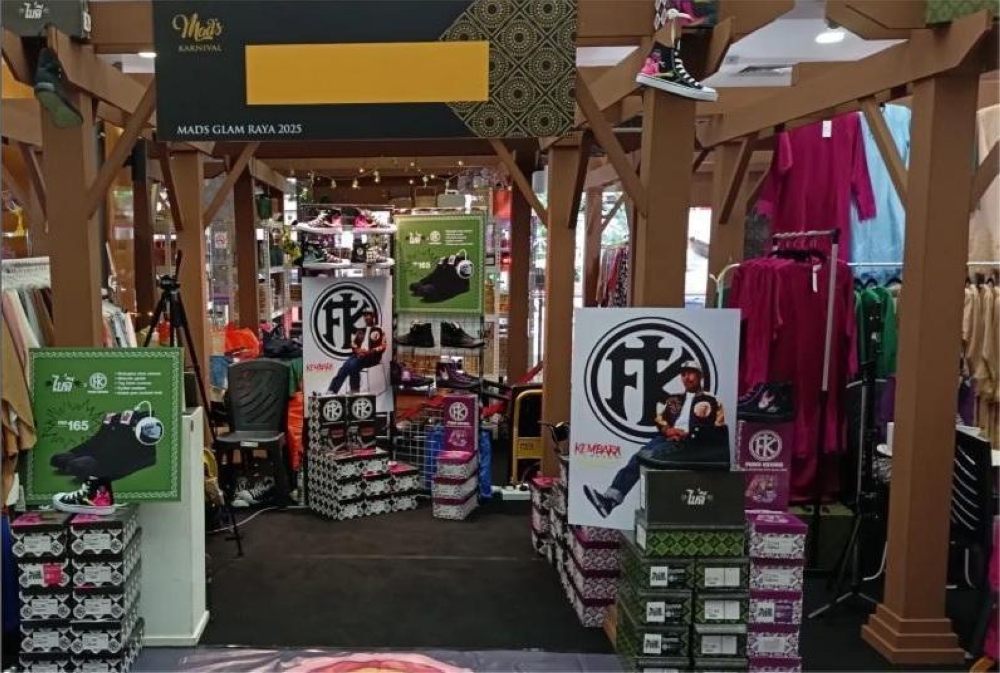A footwear icon no longer forgotten: How Malaysia’s Fung Keong shoes rose from the ashes, thanks to an indie publisher
KUALA LUMPUR, July 5 — If you ask younger generations today about their favourite sneaker or footwear brand, chances are they’ll name Adidas or Nike — must-haves in most wardrobes.
But few might know that decades before these global giants dominated the scene, Fung Keong was the go-to name in Malaysia, a homegrown staple known for its durable, rubber-soled canvas shoes that once defined everyday fashion from the 1920s through the 1990s.
Now, after decades out of the spotlight, Fung Keong is making a comeback — revived by an indie publisher determined to reintroduce the iconic sneakers to a new generation.
Did you know the brand has a long history tracing back to China before making its way to Malaysia, beginning with an entrepreneur named Fung Keong?

The man behind the brand
Little is known about the man behind the brand, but Fung Keong — also known as Fung Poi-Fong and Fung Kwok Kee — was a Chinese entrepreneur from Wan Fou (now Yunfu) in Guangdong Province.
He migrated to Seremban, British Malaya (now Malaysia) in 1902 at the age of 11, where he studied machinery and, within a decade, built a fortune in the rubber trade.
In 1920, Fung Keong established the Fung Keong Rubber Manufactory in Canton (Guangzhou), producing canvas shoes with rubber soles, which quickly gained popularity across Asia for their affordability.

Fung Keong’s Malaysian chapter and why the shoes disappeared
In 1938, following the Japanese invasion of Canton, Fung Keong decided to relocate the entire Canton factory — including staff and equipment — to Klang, Selangor where the following year, in 1939, he formally incorporated Fung Keong Rubber Manufactory (Malaysia), marking the brand’s official establishment as a manufacturer in Malaysia.
From that point on, FK shoes became a symbol of affordable, everyday footwear for Malaysians, whether it was for someone starting a new job or a child heading to school for the first time, the brand was a trusted and familiar choice.
The shoes remained popular through the 1980s and 1990s.
However, according to Izzat Amir, a partner of the Fung Keong brand of today, the import of thousands of Honda vehicles into Malaysia during the 90s shifted market dynamics.
“Tyres started offering better profit margins than shoes,” Izzat explained.
“So the company made the decision to stop producing footwear and focus entirely on tyre manufacturing.”
The business then operated under the name Fung Keong Rubber Manufactory Sdn Bhd, focused on tyre production, with no further involvement in the shoe industry — at least for a time.
According to Izzat, after the original Fung Keong brand was closed, the shoe department was later revived under a different name.
“It started as All England, then changed to All America, which is still operating today,” he said.

The revival by indie publishing house Rabak-Lit
Fung Keong shoes may have faded into nostalgic memory for many Malaysians, but it wasn’t until 2022 that indie publishing house Rabak-Lit, under the leadership of Izzat, stepped in to rekindle the legacy through a collaboration with the brand.
“It actually started with our author, Nasir Jani, also the director of Kembara Seniman Jalanan, a popular Malaysian film in the 80s, who gave us a lot of insight into the history of these shoes.
“I also read a newspaper article by Datuk M Nasir, where he mentioned he always chose local shoes, especially FK sneakers,” said Izzat, who also has a special connection with the shoes.
“I couldn’t afford expensive football boots growing up — Fung Keong was the best alternative.
“It wasn’t just shoes; it was part of our life,” Izzat added.
In this first revival phase, starting in 2023, all Fung Keong collaborations were with rock bands, actors and fashion designers, with the FK Action Nasir Jani being the first to be created.
As for the purpose behind these collaborations, Izzat said it was to build trust and show people that these are the same as the original Fung Keong shoes they remember from 40 years ago.
Many FK shoes have been created since, from FK Sneakers Kembara Seniman Jalanan M. Nasir, to FK Sneakers Keluang Man, and the upcoming FK SIAR Sneakers.
“Icons like Nasir Jani, the late Pyan Habib, and M. Nasir helped verify and vouch for us.
“Through them, people could see that Rabak-Lit truly brought back the original FK shoes — not just a rebranded version,” he added.
The rights to the FK Sneakers currently belong to Rabak-Lit, and the journey to revive the legacy of the Fung Keong shoe line has only just begun.

Where to get the new FK Sneakers and what’s next
In the ’80s and ’90s, FK sneakers were widely available at corner stores, but that’s no longer the case today.
If you want to wear a piece of Malaysian history — and take a break from big brands — the revived Fung Keong sneakers are available at Rabak-Lit’s store in Seremban, or you can contact them on social media to get a pair.
Also, keep an eye out for Rabak-Lit booths at conventions — they’re a great place to check out and buy the shoes in person.
As for what’s next for the brand Fung Keong, Izzat shared that their upcoming project is a Malaysian fashion exhibition, launching in November, celebrating styles from the 1980s.
“It will feature FK sneakers across the decades and run for a full year.
“Right now, I’m looking to buy back old shoes from collectors,” Izzat said.
“We’re also searching for original shoe racks from the ’80s and ’90s.”
These FK sneakers aren’t just shoes — they’re a symbol of heritage, reimagined for today, and with the right push, who knows? They might just go from a local icon to a global name.
Get Insurance Now



